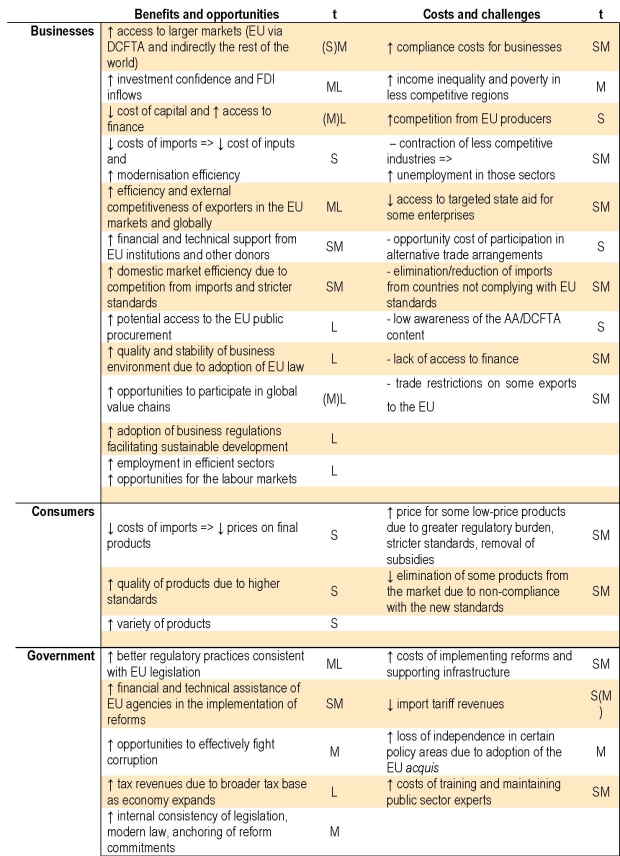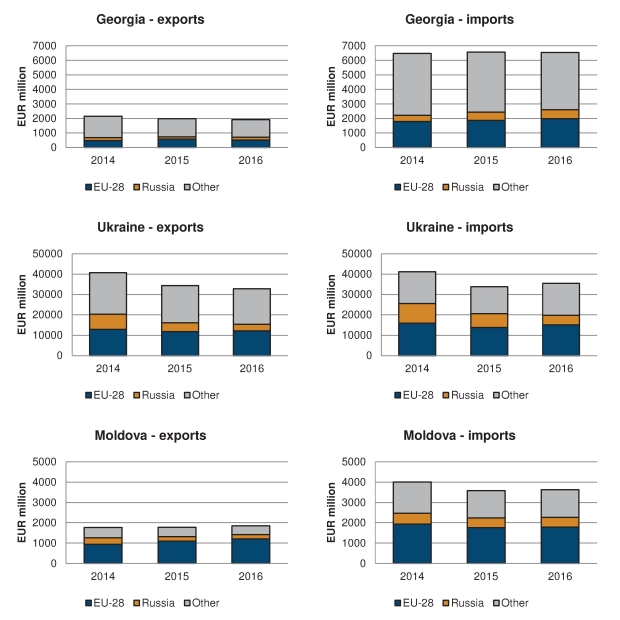Challenges of DCFTAs: How can Georgia, Moldova and Ukraine succeed?
23 June 2017
The imbalance between the costs and benefits of DCFTAs is a call to the EU to display greater pragmatism. A new wiiw policy brief discusses the challenges and possible solutions.
The Deep and Comprehensive Free Trade Area (DCFTA) that the EU concluded with Georgia, Moldova and the Ukraine as part of each country’s Association Agreement is arguably the best instrument the EU has managed to devise along the lines of its Neighbourhood Policy. It can potentially trigger positive changes along many institutional, social, economic and political dimensions. DCFTAs will help to modernise the economies of Georgia, Moldova and Ukraine, and make them more competitive, provided the envisioned reforms are indeed successfully implemented. However, while the opportunities are significant, the challenges to taking full advantage of the DCFTA are perhaps even bigger.
In a joint research project of the Bertelsmann Stiftung and the Vienna Institute for International Economic Studies A. Adarov and P. Havlik analyse the benefits and costs of the DCFTAs between the EU and Georgia, Moldova and Ukraine and propose recommendations for further action (see the joint working paper). The analysis suggests that the net benefits are highly asymmetric along the time dimension (high costs in the short and medium run – benefits accruing mostly in the longer run), as well as across regions and economic sectors (less competitive sectors and regions will face particularly onerous adjustment costs). In the light of the macroeconomic and geopolitical challenges the DCFTA countries have been facing, this may jeopardise progress of reforms.
The new Policy Brief ‘Challenges of DCFTAs: How can Georgia, Moldova and Ukraine succeed?’ reviews the key implications of the analysis, taking into account recent developments and proposes a number of policy recommendations that will facilitate a smoother DCFTA implementation grouped in three pillars: (I) background conditions and public awareness; (II) strategic sequencing of reforms and gradualism; and (III) increased financial and technical support from the EU with strict conditionality. Whereas some progress has been made already along these lines, considerable further work needs yet to be done, especially in Ukraine and Moldova.
The DCFTA effects in brief
Note: S, M, L indicate, respectively, short-, medium- and long-run time horizons (t) over which the effects are likely to manifest themselves. Short-run signifies the period within a year after the inception of DCFTA provisional implementation, medium-run indicates the period of phasing-in of trade liberalisation and other DCFTA reforms (10-15 years), long-run signifies the period after DCFTA implementation is complete.
Source: Adarov and Havlik (2016)
Source: wiiw Annual Database and national statistical offices.
Related Projects
Related Publications
- Benefits and Costs of DCFTA: Evaluation of the Impact on Georgia, Moldova and Ukraine
- Challenges of DCFTAs: How can Georgia, Moldova and Ukraine succeed?



